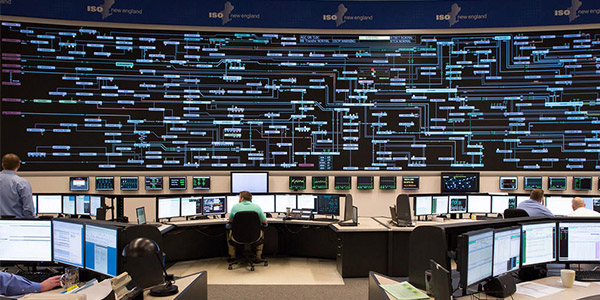NEPOOL members got a look last week at what will ultimately underpin a new study to better understand the impact of New England’s ambitious greenhouse gas goals on the operation of the ISO-NE grid.
An expected dramatic reduction in New England GHGs by 2050 will recast the ISO-NE energy mix to include significantly more carbon-free resources, while electrification of the building and transportation sectors will drastically alter load volumes, peaks and profiles.
NEPOOL is embarking on a reliability study to better understand the implications of those changes as part of New England’s Future Grid Initiative. The study will examine whether current market revenues are sufficient to attract and retain the new and existing resources necessary to reliably operate the system. It will also identify operational and reliability challenges and outline possible ways to address them.
Peter Flynn, the consultant hired by NEPOOL and the New England States Committee on Electricity (NESCOE) to serve as administrator of the Future Grid project, presented the study’s stakeholder-developed framework document to the joint meeting of the Markets and Reliability committees on Thursday.
Flynn, former deputy general counsel for National Grid, said the study will eventually consist of several analyses using different computer models because “no single model can address the range of issues that NEPOOL stakeholders desire to assess.”
The analyses will be staggered, and the results from one will inform decisions about what to model in others. Close collaboration will be required between ISO-NE and any consultants retained by NEPOOL, according to the framework.
NEPOOL approved the objective and scope of the study, which will assess and discuss the future of the regional power system through the prism of state energy and environmental laws. The study’s scope is to define and evaluate the future grid by identifying the resource mix in the coming years and resource, operational and reliability needs.
Additional assumptions and scenarios are being developed through the stakeholder process at joint meetings of NEPOOL’s Markets and Reliability committees. A gap analysis will determine whether the existing markets are equipped to maintain system reliability and identify any deficits to be addressed to assure operations meet NERC, Northeast Power Coordinating Council (NPCC) and ISO-NE standards.
The study will feature economic analysis that includes production cost and ancillary services simulations, while a revenue sufficiency analysis will determine whether forecasted market revenues will be sufficient to attract and retain necessary resources.
An engineering analysis will include energy and ancillary services (EAS) simulations and a resource adequacy screen, while an availability and security analysis will answer questions about the conditions most likely to pose operational or reliability challenges.
EAS Market Simulations
The EAS market simulations will consist of nine matrix scenarios and 18 alternative scenarios.
The “Near Future Scenario” from National Grid assumes compliance with state requirements for 2035. The resource mix comprises approximately equal 8,000 MW amounts each of offshore wind, utility-scale PV and behind-the-meter PV, and 2000 MW of electric storage. It assumes about 16,000 GWh of building and transportation load.
Eversource’s “Distributed Pathway Scenario” is modeled to 2040 and represents a path toward reducing emissions consistent with an 80% economy-wide emissions reduction by 2050. The resource mix consists of approximately 12,000 MW of behind-the-meter PV solar, 9,000 MW of utility-scale PV, 8,000 MW of OSW and 4,000 MW of electric storage. It assumes 25,000 GWh of building and transportation load weighted toward transportation.
NESCOE’s “Offshore Pathway Scenario” is also modeled to 2040 and assumes carbon reduction that would put New England on course to comply with state law requirements by 2050. The resource mix consists of approximately 16,500 MW of OSW, 15,000 MW of utility-scale PV, 12,500 MW of rooftop PV and undetermined power amounts from electric storage and energy efficiency. It assumes approximately 76,000 GWh of building and transportation load, weighted equally, and load shapes consistent with such a high electrification level.
Next Steps
NEPOOL has asked stakeholders to provide feedback on these materials and assumptions on alternative scenarios by Dec. 31 to incorporate those comments and additional data in time for the RC/MC meeting on Jan. 19, 2021.
The committee expects study assumptions for the first phase of the report to be finalized by March 1. The final production cost simulation is scheduled for September 2021 to March 2022, and the ancillary services simulation from September 2021 to January 2022. MARS analyses will occur between October 2021 and January 2022. A final report is expected by May 2022.
For the second phase, dates have not been determined for the revenue sufficiency analysis and system security analyses, but they will not start before September 2021.




